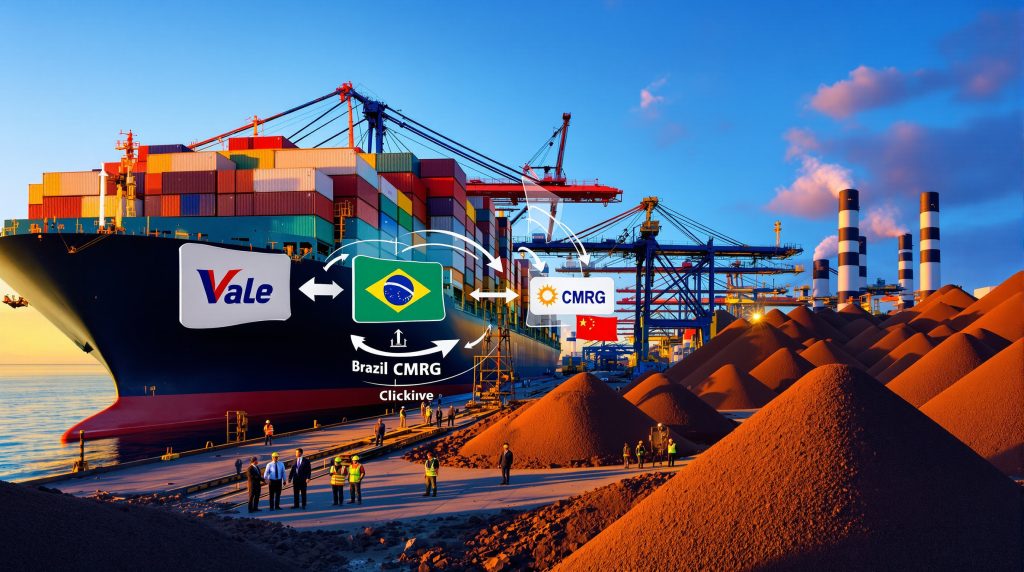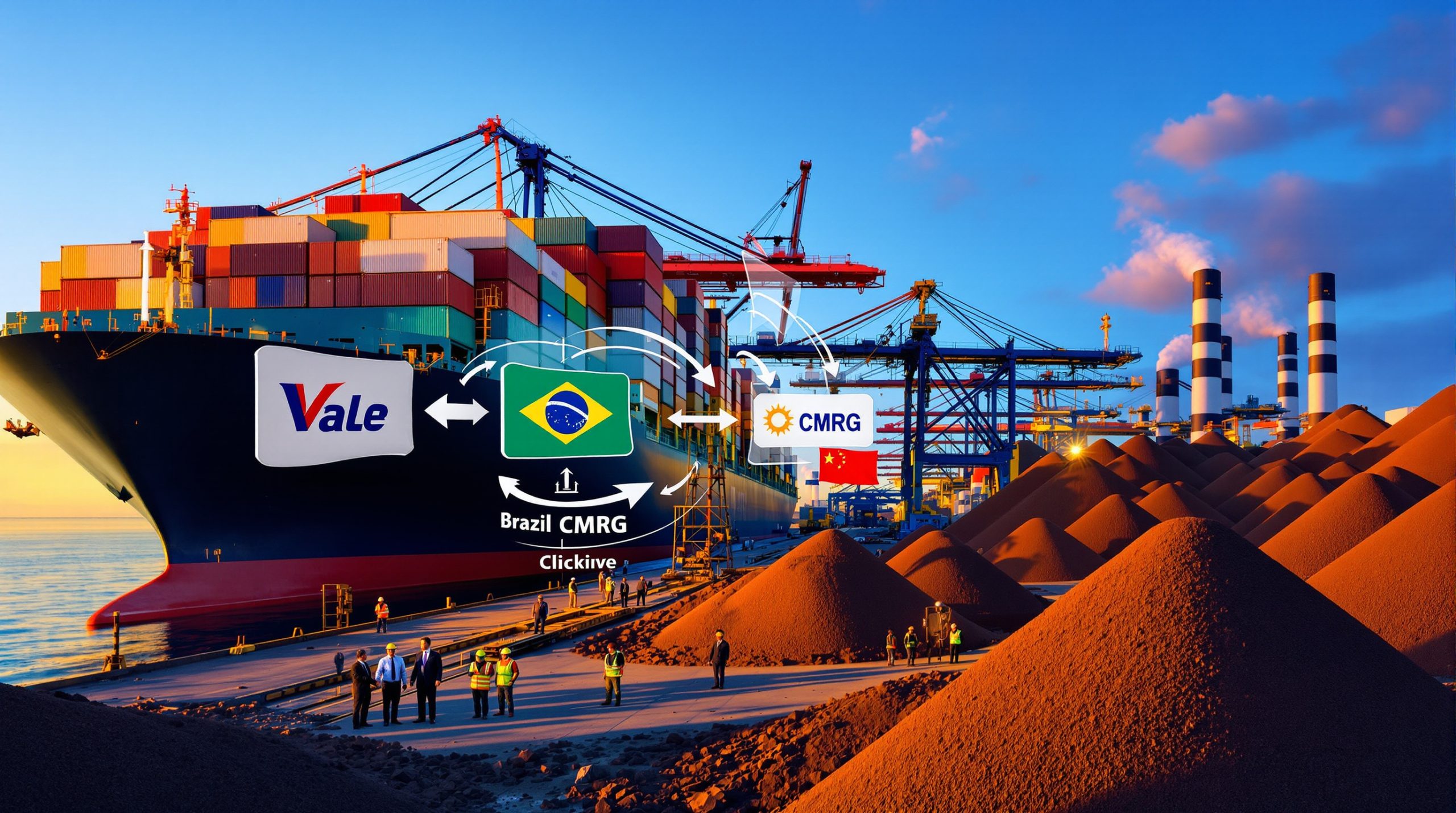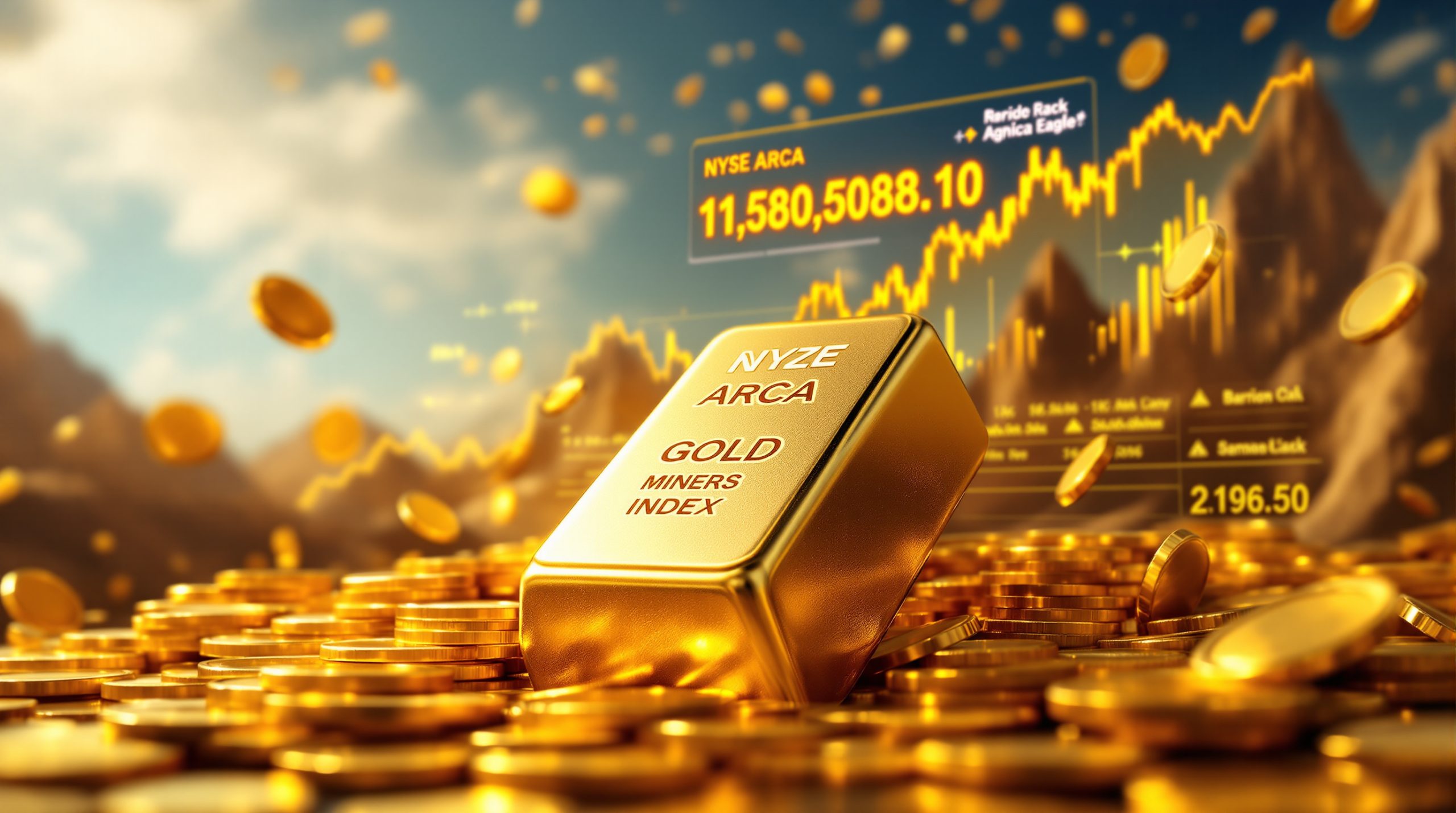China's Iron Ore Trading Dynamics: How CMRG Is Reshaping Vale's Market Access
China Mineral Resources Group (CMRG) has emerged as a pivotal player in the global iron ore market since its establishment in 2022. This state-run entity was created with a specific strategic purpose: to shift the balance of power from major iron ore producers to China's vast steel industry. With China consuming approximately 70% of seaborne iron ore trade globally, any changes to its procurement approach significantly impact the entire market.
CMRG's Strategic Evolution
CMRG was founded as part of China's effort to gain more control over the $130 billion iron ore import market. The organization represents a calculated move to consolidate buying power and strengthen China's position in negotiations with global mining giants.
Initially focused primarily on Australian iron ore cargoes, CMRG has recently expanded its operations to include Brazilian miner Vale's products, marking a significant evolution in its market approach.
The entity now functions as both a price stabilizer and centralized procurement entity, helping balance supply mismatches that naturally occur within the industry's complex supply chain.
CMRG's Market Influence
A key aspect of CMRG's operational model is that it operates without charging premiums when reselling iron ore to Chinese mills. This approach has led domestic steelmakers to view the trader as a relatively fair supplier compared to direct purchases from mining companies.
By serving as an intermediary, CMRG helps balance supply mismatches that occur with long-term contracts, providing flexibility when steelmakers have surplus volumes or need additional cargoes.
The organization's growing influence strengthens China's negotiating position against major global miners, potentially reducing price volatility while creating more predictable demand patterns in the world's largest iron ore market.
How Has CMRG's Relationship With Vale Changed Recently?
The Previous Stance
Vale had historically maintained a cautious approach toward CMRG, preferring to establish and maintain direct long-term contracts with Chinese steelmakers. This strategy aimed to preserve Vale's pricing power and direct customer relationships without intermediaries.
The Brazilian miner's initial reluctance aligned with traditional mining company preferences for stable, long-term supply agreements that provide operational planning stability and revenue predictability.
The New Commercial Arrangement
A significant shift occurred in mid-August 2023 when CMRG began selling Vale's iron ore on the spot market. This represents the first time CMRG has handled Vale's cargoes, marking a notable evolution in their commercial relationship.
The arrangement provides Vale with additional flexibility in the Chinese market, creating an alternative sales channel beyond direct contracts with steel producers.
This new dynamic helps Vale manage its high production output in what has become a well-supplied market, offering a pragmatic solution to changing market conditions.
What Market Factors Drove This Strategic Shift?
Supply-Side Pressures
Vale's strong production has contributed to an already well-supplied iron ore market, creating challenges for traditional sales channels. When direct contracts cannot absorb all production volume, alternative distribution methods become necessary.
High portside inventories in China have created selling challenges for all major suppliers, requiring more flexible approaches to market access and distribution.
Additionally, fluctuations in Chinese steel production have softened demand for iron ore at various points, creating temporary market imbalances that require adaptive sales strategies.
Commercial Flexibility Benefits
Spot market transactions through CMRG offer Vale greater flexibility compared to rigid long-term contract structures. This helps the company respond to short-term market conditions more effectively.
The arrangement helps Vale manage high output volumes when direct sales channels are constrained by market conditions or contractual limitations.
It also provides an alternative pathway to reach Chinese customers during periods when traditional channels may be saturated or less effective.
Pricing Strategy Considerations
Long-term contracts offer price stability and operational planning benefits but can create volume mismatches when steel production fluctuates. As noted by market experts, these contracts "often leave steelmakers with mismatched volumes relative to actual output, creating a need to offload any surplus or purchase additional cargoes to cover shortfalls."
CMRG's involvement helps balance these supply and demand fluctuations, creating a more responsive market mechanism that benefits both producers and consumers.
The arrangement creates complementary channels that can coexist with traditional contract structures while adding necessary flexibility to the overall iron ore price trends and trade ecosystem.
What Are the Logistical Challenges in Vale's China Trade?
Distance and Shipping Considerations
Brazil's geographic distance from China creates inherent logistics challenges for Vale compared to Australian competitors. The longer shipping route increases both transit times and transportation costs.
Weather disruptions and shipping bottlenecks can have outsized impacts on Brazilian iron ore deliveries to China due to the extended supply lines and limited alternative routing options.
These distance-related factors necessitate more complex inventory management and supply chain planning for both Vale and its Chinese customers.
Port Infrastructure Requirements
Large bulk carriers require specialized port infrastructure with sufficient draft and handling capabilities. Port capacity constraints can limit the efficiency of Vale's shipments to certain Chinese destinations.
Operational bottlenecks during peak demand periods can create additional challenges for maintaining reliable delivery schedules from Brazil to Chinese ports.
Impact on Competitiveness
Australian iron ore leadership benefits from proximity advantages with shorter shipping distances to China, allowing for more responsive supply adjustment and lower freight costs.
Vale must overcome higher freight costs to remain competitive in the Chinese market, which can compress margins during periods of price pressure or market oversupply.
CMRG's involvement may help mitigate some of these logistical challenges by providing more flexible distribution options once cargoes reach Chinese ports.
How Does This Arrangement Benefit Both Parties?
Vale's Benefits
For Vale, "moving cargoes through CMRG offers some flexibility in the world's biggest steel producer, while helping it manage high output" during periods of market saturation or demand fluctuation.
The arrangement maintains Vale's access to the world's largest iron ore market while diversifying its sales channels, reducing reliance on any single distribution method.
It creates flexibility in managing production volumes, allowing Vale to maintain optimal production levels even when direct contract demand fluctuates.
The arrangement may also potentially improve relationships with Chinese authorities by demonstrating willingness to work within China's evolving procurement framework.
CMRG's Benefits
From Beijing's perspective, "the deal strengthens its role as a price-setter and stabilizer in a trade that has long been dictated by global miners," enhancing China's influence over a critical industrial input.
The arrangement expands CMRG's control over iron ore imports beyond Australian sources, diversifying its supply portfolio and increasing overall market influence.
It strengthens CMRG's role as a price influencer in the global iron ore market by gaining access to Brazilian ore that can be strategically released into the domestic market.
The deal enhances CMRG's ability to stabilize domestic supply for Chinese steelmakers, advancing China's strategic goal of centralizing commodity procurement.
Mutual Advantages
The arrangement creates more efficient market mechanisms for both parties, helping balance supply and demand fluctuations through complementary channels.
It provides flexibility beyond rigid long-term contract structures while still maintaining the stability benefits of established relationships.
The complementary nature of spot and contract markets can help optimize resource allocation and improve overall market efficiency.
What Does This Mean for the Global Iron Ore Market?
Power Dynamics Shift
The evolving relationship strengthens China's position as both consumer and price influencer in the global iron ore trade, potentially reducing the pricing power traditionally held by major miners.
CMRG's growing role may pressure other major miners surging insights to reconsider their China strategies, potentially leading to industry-wide changes in how iron ore is traded and priced.
The arrangement contributes to a more centralized procurement model for the world's largest steel producer, creating a more coordinated buying approach that may influence global price discovery mechanisms.
Market Structure Evolution
The developing model blends spot market flexibility with strategic state control, creating a hybrid approach that may become more prevalent in critical mineral markets.
This evolution demonstrates how market forces and strategic interests can align to create new trading structures that serve both commercial and policy objectives.
The arrangement may lead to more stable but potentially lower pricing over time as buyers gain greater coordination and influence over supply allocation.
Future Trading Patterns
The Vale-CMRG arrangement could lead to increased involvement of CMRG in long-term contracts as relationships develop and initial spot market cooperation proves successful.
It may accelerate China's efforts to diversify supply sources while maintaining more centralized control over how those supplies are distributed domestically.
The precedent potentially creates new models for resource trading relationships that balance state interests with commercial realities in critical mineral markets.
How Is Vale Adapting Its Product Strategy for the Chinese Market?
Market Responsiveness
Vale must remain highly responsive to changing Chinese market requirements, including evolving environmental regulations, cost pressures, and quality preferences among steelmakers.
The company faces the challenge of balancing premium product positioning with market share maintenance during periods of heightened competition or economic pressure.
Working with CMRG provides additional market intelligence that may help Vale refine its product strategy to better align with evolving Chinese market conditions.
Competitive Positioning
Vale competes with both Australian and domestic Chinese producers, requiring careful positioning that leverages Brazil's natural advantages in certain ore qualities while addressing the geographic disadvantage.
The company must maintain premium positioning while ensuring sufficient flexibility to adapt to market changes and competitive pressures.
Strategic relationships with entities like CMRG may help Vale better navigate competitive dynamics within the complex Chinese market landscape.
What Are the Implications for Other Iron Ore Producers?
Competitive Response Pressure
The Vale-CMRG arrangement may prompt Rio Tinto, BHP, and other major miners to reconsider their China strategies, potentially accelerating discussions with CMRG about similar arrangements.
The development could influence price forecast insights and contract structures across the industry as competitors adapt to the changing market dynamics.
According to market sources, "CMRG has been in talks with the top miners for long-term supply starting in the second half," indicating broader industry engagement beyond the Vale arrangement.
Market Share Dynamics
Australian miners maintain geographic advantages but face growing competition and potential shifts in procurement practices that could affect their market position.
New entrants may find market access more challenging through centralized procurement models that favor established relationships and larger-scale suppliers.
The evolving landscape creates potential for more strategic rather than purely commercial relationships, changing how market share is defended and expanded.
Strategic Considerations
The Vale-CMRG arrangement highlights the growing importance of government relationships alongside commercial ones in critical mineral markets, especially for resources considered strategically important.
It demonstrates how market structures continue to evolve in resource sectors, requiring adaptive strategies from all participants to remain competitive.
The trend may accelerate toward greater state involvement in critical mineral trade, particularly in markets with high concentration of demand.
What Future Developments Should Market Watchers Monitor?
Negotiation Developments
Market observers should track progress in talks between CMRG and major miners for long-term supply contracts, which could signal more fundamental shifts in industry structure.
Potential expansion of CMRG's role with other global suppliers beyond Vale and Australian miners would indicate broader structural changes in the iron ore market.
Evolution of pricing mechanisms and benchmarks could result from changing trading patterns and increased centralization of procurement.
Production and Inventory Trends
Chinese steel production rates and capacity utilization will directly impact iron ore demand and influence the success of new trading arrangements.
Portside inventory levels and drawdown patterns provide important signals about market balance and the effectiveness of various distribution channels.
Vale's production volumes and export destinations will reveal how the company is balancing various market access strategies and relationship approaches.
Policy Signals
Chinese government statements on resource security and pricing strategies offer important context for understanding CMRG's evolving role and mandate.
Global trade war impact affecting resource flows could either accelerate or constrain the evolution of centralized procurement models.
FAQ: Understanding China's Iron Ore Trading Evolution
How significant is China in the global iron ore market?
China dominates global iron ore demand, consuming approximately 70% of seaborne iron ore trade. This $130 billion import market gives China iron ore trader Vale cargoes substantial influence over global pricing and trade patterns, making any structural changes to its procurement approach highly significant for producers worldwide.
Why did China establish CMRG in 2022?
China created CMRG specifically to consolidate buying power, reduce price volatility, and shift leverage away from major miners like Rio Tinto, BHP, and Vale. By centralizing purchases, China aims to secure more stable pricing and better supply terms while reducing the pricing power of dominant producers.
How does CMRG's involvement affect iron ore pricing?
CMRG acts as both a market participant and stabilizing force, potentially reducing price volatility while creating more predictable demand patterns. Its growing influence may moderate price peaks during supply shortages while establishing more consistent baseline pricing during normal market conditions.
Will other major miners follow Vale's approach with CMRG?
Major Australian producers like Rio Tinto and BHP are likely watching this development closely. While they currently maintain more direct relationships with Chinese steel mills, economic pragmatism may eventually lead to similar arrangements if CMRG continues to expand its market influence and control over import channels.
Looking to Gain Early Access to Major Mineral Discoveries?
Discovery Alert's proprietary Discovery IQ model delivers instant notifications on significant ASX mineral discoveries, empowering investors to identify actionable opportunities ahead of the broader market. Explore how historic discoveries have generated substantial returns by visiting Discovery Alert's dedicated discoveries page and begin your 30-day free trial today.




